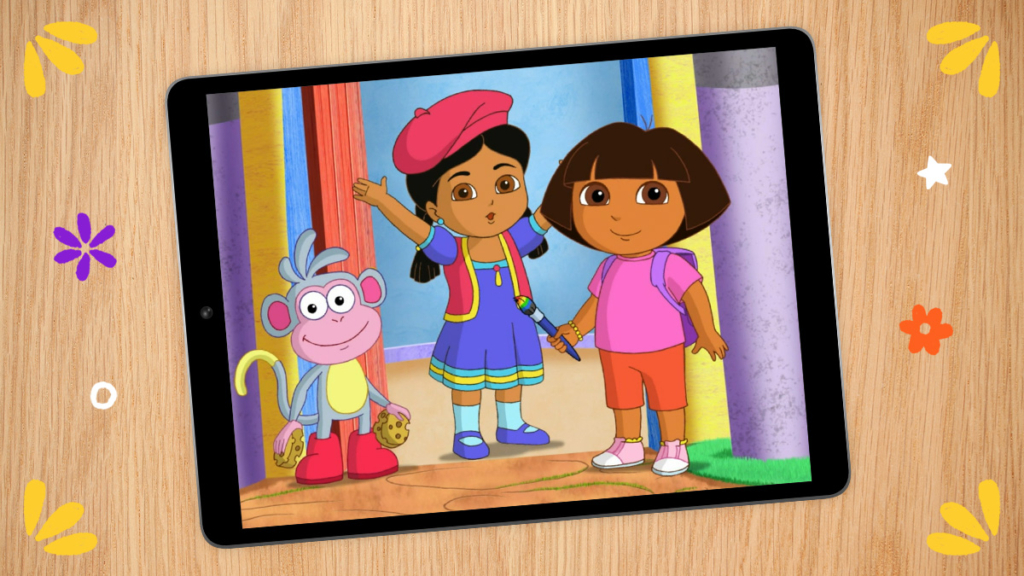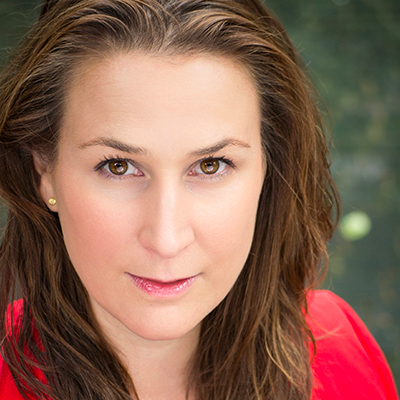Inspiring Latine and Hispanic Heritage in Children’s Media

Noggin talks to Dr. Mariana Diaz-Wionczek about her work in children’s media and the responsibility of creators to promote the representation of all children.

What does Hispanic Heritage Month mean to you?
To me, Latin American and Hispanic Heritage Month means the celebration of US Latinas and Latinos and the traditions of Latin America. As an immigrant who came from Mexico City to the US as an adult, I have folded my Mexican identity into my broader identity as Latina. This month, I get to celebrate Mexican traditions as well as learn about the traditions of others in my comunidad.

What motivates you to promote Latine/Hispanic culture in your work within children’s media?
"In the US, one in four children under 18 in the US are Latine (and in some states like California, Texas and New York, up to 40-50%!), yet Latine children and families continue to be underrepresented on screens,"
In the US, one in four children under 18 in the US are Latine (and in some states like California, Texas and New York, up to 40-50%!), yet Latine children and families continue to be underrepresented on screens, with only one third of human characters in preschool television being racially or ethnically diverse.1 As content creators, I see it as a responsibility to promote the representation of all children, including Latines, on screens. This is particularly important because when children watch diverse content, it positively affects their self-esteem and promotes empathy and understanding.2
1 Colleen Russo Johnson and Adrianna Ruggiero, 2020
2 Identity Matters 2019, Sesame Workshop

What is some of the content that you have influenced which you are most proud of?
Dora the Explorer, I brought up the importance of a Spanish-speaking character being at the same level of a second language acquisition as his English-speaking counterpart, and not behind him. It was also important to me to represent the diversity of the Latines and show that we are not a monolithic community. In recent years, that has been addressed in the conversation of authentic representation of Latines, which is great. Today, I am proud to be part of the diverse creative teams behind ¡Dora!, Rosie’s Rules, and Alma’s Way because the characters in these shows represent many of the kids and families in our audience. I believe that seeing themselves reflected in this content is a validating experience that will have a significant impact on kids’ sense of self which, in return, positively influences many other aspects of kids’ lives.

What are your thoughts on the importance of representation in children’s media?
In general, we know that all children can benefit from seeing diverse and inclusive content, whether they are from an underrepresented group or not. Seeing realistic, layered kids and families can aid in identity development and help kids uncover who they are and who they want to be. Diverse examples also enrich life, exposing kids to things they may not see in their everyday worlds – places to travel, songs to sing, foods to enjoy. And of course, seeing similarities and differences promotes understanding and respect for others.
We also know, through various scholarly studies, that when kids see themselves represented in an overt way, that promotes their self-esteem. Yet in children’s media, many populations are still very much underrepresented.
"...when kids see themselves represented in an overt way, that promotes their self-esteem. Yet in children’s media, many populations are still very much underrepresented."
Now, we’d like to think that parents and teachers are teaching kids about diversity, but they’re not – 68% of parents think that a child’s race or ethnicity impacts their ability to succeed, and 31% think it has a major impact. But even though this is true, only 10% of parents are actually talking to their kids often about race and ethnicity, and only 8% are talking to them about socioeconomic class. In addition, 45% of teachers think class is not appropriate to discuss with their kids, so only 19% are doing it at least sometimes. Media can and should fill this knowledge gap left by parents and teachers. This is a huge opportunity, and even a responsibility, given how much time kids spend in front of screens. We want to model the right messages.

How would you describe the progress (or lack thereof) in representation of Latine and Hispanic heritage in children’s media over the years?
We’ve come a long way since Dora the Explorer kicked the door open for Latine representation on kids’ TV! One of the priorities today is to show the diversity of the Latine community, which is not monolithic at all. Not only do Latines come from many different countries, but within those countries, there is a plethora of cultures each with their own set of traditions, music, architecture, food, and stories. Many of these result from the mix of different cultures, including those indigenous to the Americas and people who have come to Latin America from Europe – mainly Spain, Africa, and Asia. All those stories ought to be represented and celebrated!
To tell those stories authentically, it is imperative to bring the voices of Latines into our creative teams..."
To tell those stories authentically, it is imperative to bring the voices of Latines into our creative teams – from writing to designing, animating, casting, and composing. Today, the children’s media community has certainly acknowledged the relevance of building diverse teams. Our next challenge is to ensure that we back up our intentions with actions and go the extra mile in opening up opportunities to a diverse pool of candidates, and making sure that we offer training and mentoring opportunities for young Latine professionals.

What advice would you give to creators who wish to make Latine and Hispanic heritage part of their daily work and not just limit it to a date or month every year?
My advice is to not only hire a diverse team that includes Latines (if we mirror the US population, one in four team members should be Latine!), but get to know them and be aware that there’s a lot they can contribute, not only the fact that they are Latine or bilingual. Account for cultural differences and individual differences that relate to culture, particularly regarding working styles.
And my advice for young Latines starting in this industry is to network, network, network! Get a LinkedIn profile so the world can easily find you and learn about you. It is our time and the doors are opening, so take the opportunities that come your way. People want to know you as a whole person. Your lived experiences are of great value to any team and those same experiences can make a difference in the authenticity of the content you’re helping create. Also, if something feels off, find a tactful way to express what feels off to you. Usually, if it feels not right, it probably can be done better. Small details count! Like a detail on a character’s clothing to something like an unnecessary accent, to the amount of lines a Latine character has on a script. You may be seeing something that others are missing, and bringing it up can really have an impact and elevate the product.

About Dr. Diaz-Wionczek
Dr. Diaz-Wionczek is a Co-Executive Producer on Nickelodeon’s ¡Dora! and Executive Producer on 9 Story’s Rosie’s Rules for PBSKids. She is a DEI advisor for Google, PBSKids, Sesame Workshop, Higher Ground, Nickelodeon, Noggin, Joan Ganz Cooney Center, Pinna, and Bridge Multimedia, among others. She teaches a graduate class at NYU, gave a TEDx talk on ethnic identity, is a reviewer for the Journal of Children and the Media, and is a contributor to The Future of Children report and KidScreen. Dr. Diaz-Wionczek obtained a Ph.D in Psychology from CUNY’s Graduate Center and a B.A. from the National Autonomous University of Mexico.
See What Kids Learn with Noggin

Discover Your Child's Favorites

Give Noggin a Try
Kid-safe & ad-free
Accessible on multiple devices
New content added weekly
Downloadable books & games for offline play
Kid-safe & ad-free
New content added weekly
Accessible on multiple devices
Downloadable books & games for offline play


